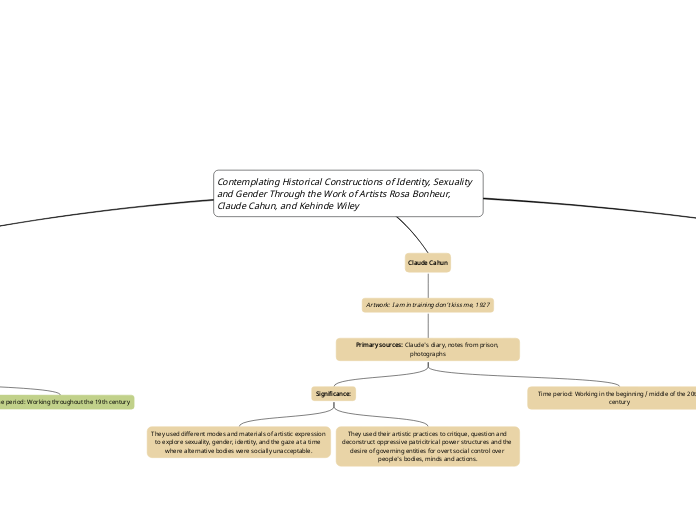Contemplating Historical Constructions of Identity, Sexuality and Gender Through the Work of Artists Rosa Bonheur, Claude Cahun, and Kehinde Wiley
Rosa Bonheur
Artwork: The Horse Fair, 1853
Primary sources: Anna's diary, Rosa's diary, notes, and legal documents, Rosa's paintings, photographs of Rosa taken during her life.
Significance:
Through a nuanced study of Bonheur’s lifesize work, The Horse Fair (1853), in consideration with her personal life, we can understand the work as radical for its time, working to deconstruct 19th century ideas of femininity and the female body. In order to paint with such accuracy, Bonheur often frequented male dominated spaces, such as stockyards, livestock markets and slaughterhouses. In an effort to gain access to these places, blend in, and not get harassed, Bonheur dressed in men’s clothing and cut her hair in a shorter fashion than was popular among women of the day.
Through Bonheur’s possible self portraits in masculine garb and spaces, we can better contextualize her desire to create a visual identity that represented her own sexuality as well as her own sociopolitical beliefs about gender and animals. Bonheur’s focus on animals and not human subjects in her work can also be seen as highly reflective of her current moment in history, as depicting animals allowed her to abstractly explore her own alternative notions of freedom, gender, and sexuality, within the acceptable context of painting, while avoiding social control.
Time period: Working throughout the 19th century
Claude Cahun
Artwork: I am in training don’t kiss me, 1927
Primary sources: Claude's diary, notes from prison, photographs
Significance:
They used different modes and materials of artistic expression to explore sexuality, gender, identity, and the gaze at a time where alternative bodies were socially unacceptable.
They used their artistic practices to critique, question and deconstruct oppressive patricitrical power structures and the desire of governing entities for overt social control over people's bodies, minds and actions.
Time period: Working in the beginning / middle of the 20th century
Kehinde Wiley
Artwork: Femme piquée par un serpent, 2008
Primary sources: interviews, speeches, newspaper articles, paintings
Significance:
Wiley's interest in deconstructing and exploring Black male masculinity and sexuality in Femme piquée par un serpent (2008) through his embrace painting his subjects in traditional greco-roman feminine poses makes piece a relevant and noteworthy place to conclude the study.
Time period: Working in the late 20th century but mostly the beginning of the 21st century
